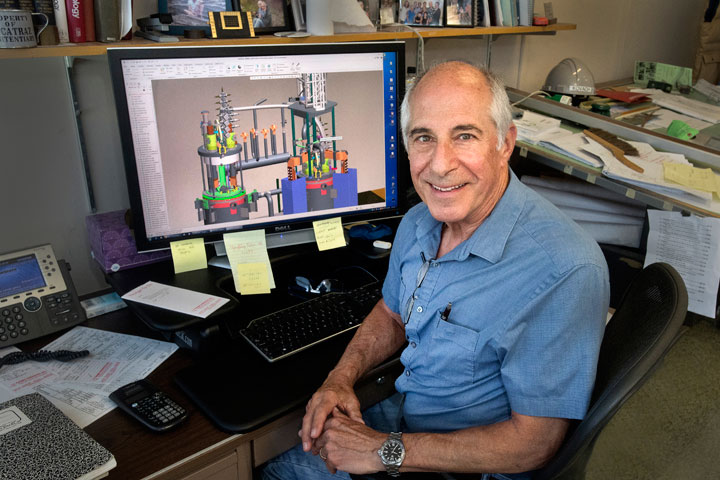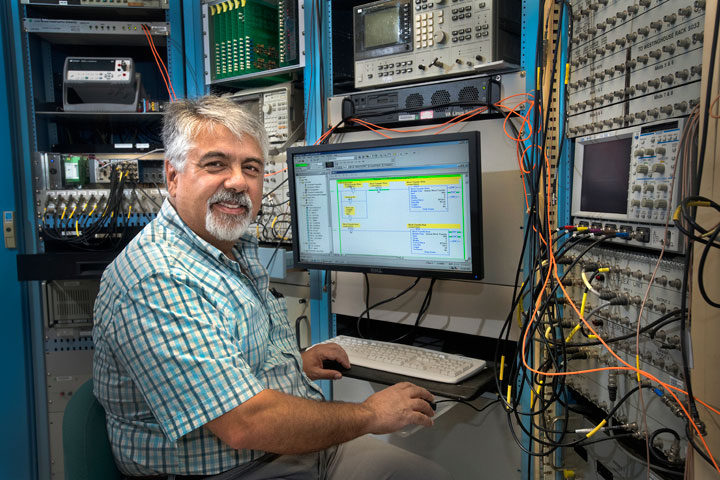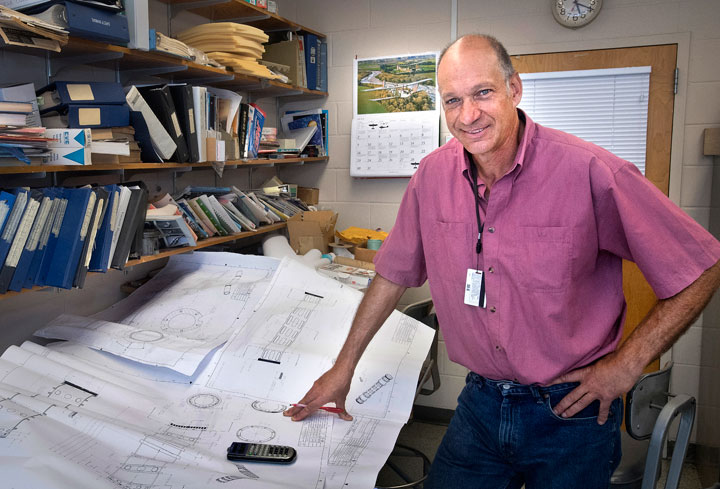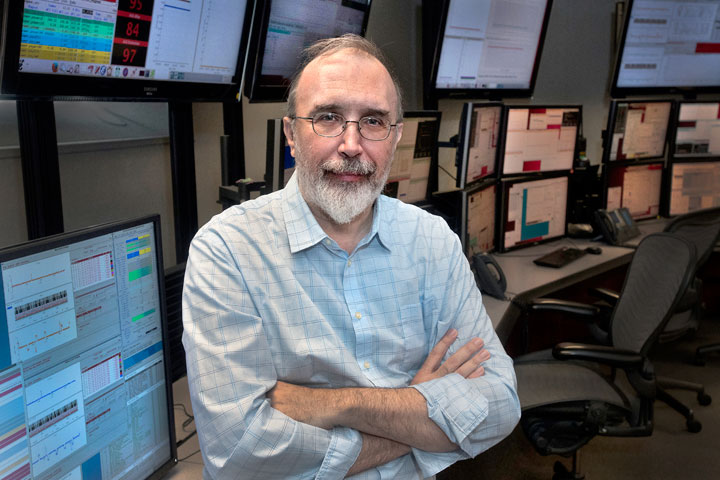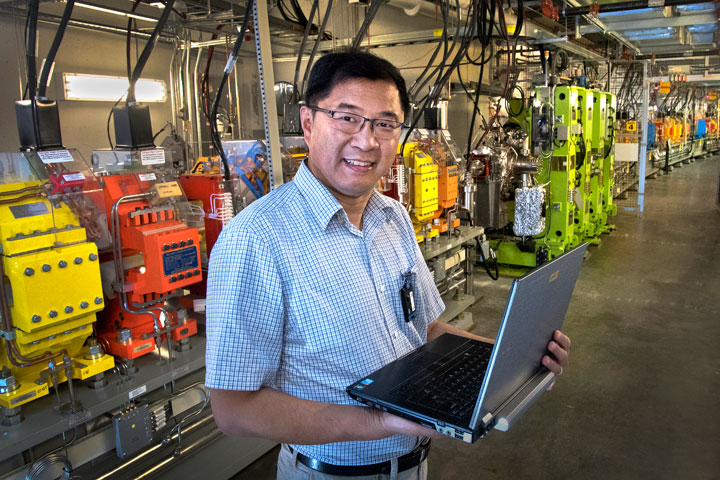2017 Engineering Award Recipients
August 7, 2017
Engineering Awards are presented to recognize distinguished contributions to the Laboratory's engineering and computing objectives. The 2017 Engineering Award recipients are:
Paul Kovach, Superconducting Magnet Division
Senior mechanical engineer Paul Kovach recently helped design, construct, and commission a new cryogenic magnet test facility at Brookhaven that is being used to test all superconducting magnets built for a project to increase the luminosity—the collision rates—at the Large Hadron Collider (LHC) at CERN in Europe.
In this role, Kovach was responsible for all the mechanical design engineering, which presented many challenges that he overcame. These challenges included maintaining an effective seal between the liquid and superfluid helium volumes used to cool the magnets to a superconducting state and equilibrating the pressures in the two helium volumes to prevent failure of the boundary seal. In conjunction with solid modeling, Kovach performed various engineering calculations and thermal analyses in support of his mechanical designs.
Kovach's contributions will enable magnets to be properly validated before installation at CERN. This validation will ultimately allow physicists to perform more precise studies of newly discovered particles and to observe very rare processes that have been inaccessible at LHC's current sensitivity.
Ioannis Marneris, Collider-Accelerator Department
Throughout his 29-year career at Brookhaven Lab, Ioannis Marneris has spearheaded the effort to modify and improve the power supply and control systems that energize accelerators at Brookhaven, including the Booster, Alternating Gradient Synchrotron (AGS), and the Brookhaven Linear Accelerator.
Under his direction, the reliability and performance of the AGS and Booster have greatly improved, leading to increased luminosity at the Relativistic Heavy Ion Collider and higher beam stability at the on-site NASA Space Radiation Laboratory. More recently, he has been working with colleagues at Fermilab and CERN to develop a cost-effective solution for upgrading the Linac power supplies. Work on such high-power systems must be meticulously planned and executed before energizing the accelerators, as small mistakes can have very damaging and expensive consequences.
Marneris' engineering skills and knowledge of complex control systems, together with his troubleshooting abilities and attention to detail, have contributed to the successful operation of the accelerators.
Andrew Marone, Superconducting Magnet Division
Andrew Marone has worked in the Superconducting Magnet Division since 1987, demonstrating many times over his aptitude for solving technical challenges and mastering engineering skills.
When the former senior cryogenics engineer retired, Marone became an expert on the legacy cryogenic facility. When he was challenged to design and specify the requirements for a new 1.9K cryogenic facility, he tapped colleagues at Brookhaven and other labs, and delved into related published works. He solved problems and applied creative solutions to ensure the proper functioning of a refrigeration system to produce superfluid helium, and utilized old equipment to save time and cost.
This work contributed greatly to the successful completion of the Lab's Hi-Lumi Magnet Vertical Test Facility—a project that has drawn accolades from across the Department of Energy complex and around the world—as well as funding to Brookhaven of more than $11 million in the next eight years.
Al Marusic, Collider-Accelerator Department
Al Marusic is widely recognized throughout the Collider-Accelerator Department as a technical expert in operation of the Relativistic Heavy Ion Collider (RHIC). He is highly sought after for projects large in scope, highly complex, analytical in nature, and requiring novel solutions. He evaluates and addresses cross-technology, cross-platform issues as he identifies, defines, analyzes, and implements solutions.
Marusic developed RHIC's ramping system to implement control set-points for all hardware devices used to accelerate particle beams to full energies and for controlling the beams' properties. He led development of multiple efforts allowing for more flexibility in the RHIC physics programs. Marusic optimizes and manages the RHIC beam-based feedback systems, including real-time loops for controlling the beam's trajectory and transverse focusing properties. His recent work entailed combining complex accelerator modelling codes to ensure simultaneous parameter optimization which yielded agreement between calculated and measured accelerator optical parameters.
Marusic has developed a truly unique ability to identify—and address—the root causes of operational difficulties. His contributions to the successes of RHIC runs have been vast and far-reaching.
Yuke Tian, NSLS-II Photon Sciences Division
Yuke Tian is receiving the Engineering Award for his major contributions to the successful design, construction, and operation of the National Synchrotron Light Source II (NSLS-II) accelerators. He has been involved in every phase of the project, including the design, procurement, installation, testing, and commissioning of accelerator components. As the supervisor of the NSLS-II group performing all accelerator controls, he leads his peers by example.
Tian developed novel engineering solutions for NSLS-II, including a new generation of power supply controls for the wide range of power sources used at NSLS-II. NSLS-II has more than 900 power supplies, and Tian's control interface unifies the whole set. He also developed the fast orbit feedback system—software that has helped the NSLS-II storage ring reach an essential design requirement: a stability of 10 percent of the beam size and divergence.
Tian's key impact on the development of NSLS-II accelerator controls at every system level is contributing to the fast ramp-up in performance at the facility.
2017-12410 | INT/EXT | Newsroom




